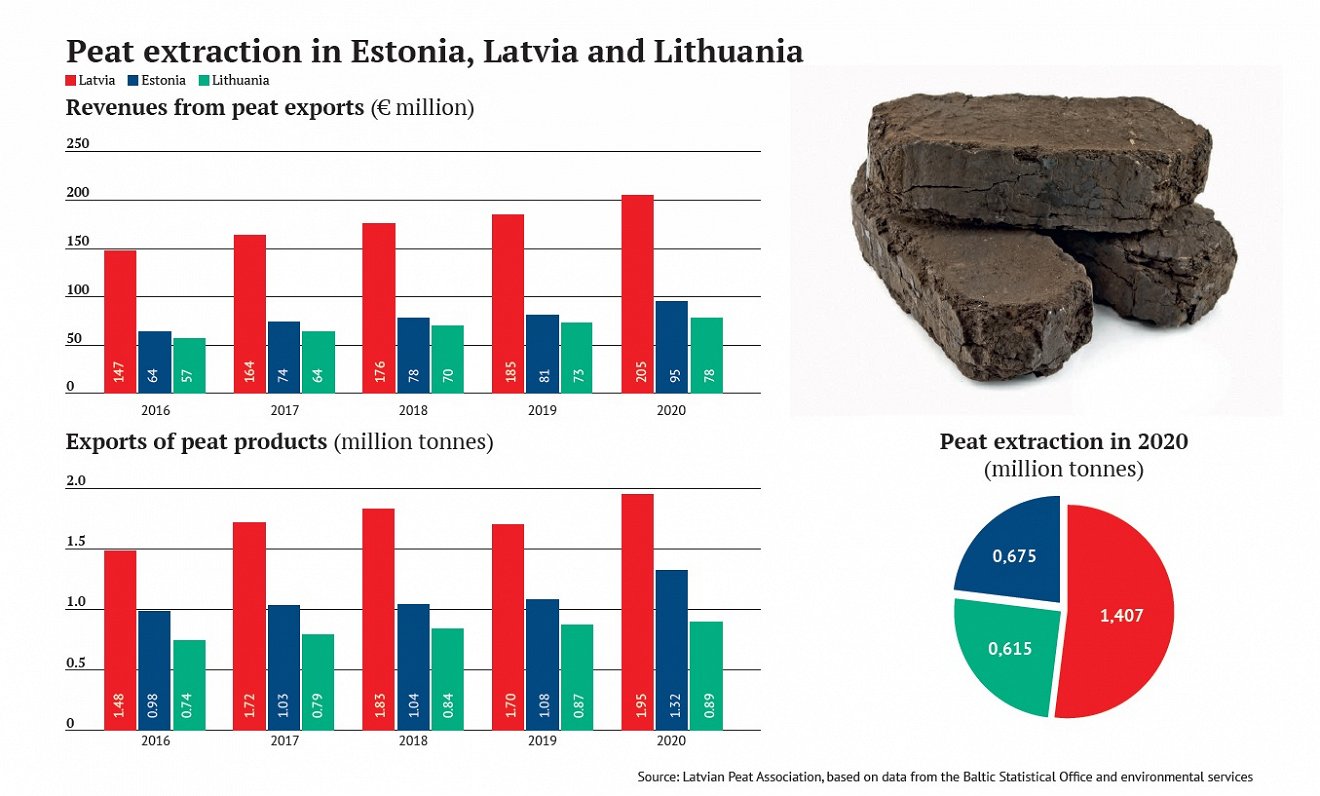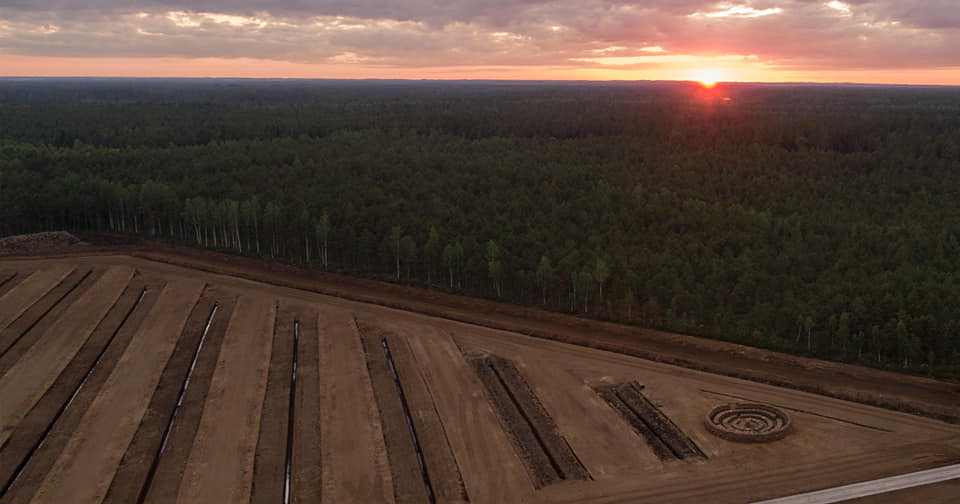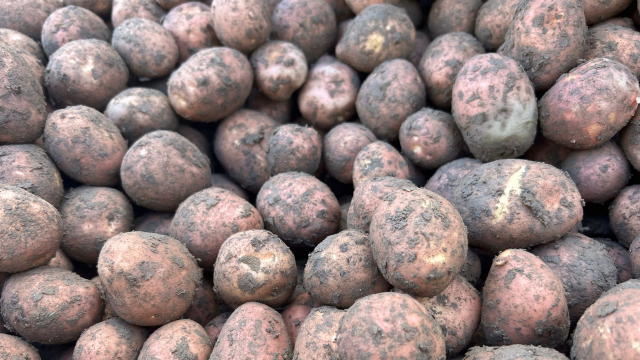Peat is a natural resource that actually regenerates, albeit slowly. The extraction of peat is a traditional industry for the Baltics, which has been around since the 1700s. Thanks to Latvia’s favourable climate, the natural annual growth of peat significantly exceeds its extraction.
Board chairwoman of the Latvian Peat Association, Ingrīda Krīgere, noted that in the Baltics, peat is extracted for horticultural use: growing food and decorative plants, as well as tree saplings.
"31% of the peat used in professional horticulture in the EU comes from Latvia," Krīgere says.
One cubic metre of peat can be used to grow 6,000 young trees: enough to cover 3 ha of land with a forest, and every hectare of forest binds 370 tonnes of CO2 in 50 years. One cubic metre of peat can also be used to grow 7000 plant seedlings: this mean producing 16 tonnes or cucumbers, or 32 tonnes of tomatoes.

The global demand for peat moss is rising, which is a good foundation for the industry to grow on, not only in Latvia, but also in Estonia and Lithuania. The most significant issue for those working in the industry is associated with the policies of the EU Green Deal.
According to Krīgere, the successful growth of the industry, and even its existence, are jeopardised by the lack of understanding of the distinction between the use of peat in the power industry and in horticulture, by the inaccurate accounting of GHG emissions, and the fact that this slowly renewable resource is classified as a fossil resource on a European level.
"At the same time, peat moss is a component of circular economy: it does not go to waste after use, and is instead incorporated into the soil; and using peat to grow forests, decorative plants and healthy foods actually helps achieve climate goals," Krīgere says.
Nor are peat's positive uses purely horticultural. As previously reported by LSM, it will form the basis of Latvia's entire pavilion at the forthcoming Dubai EXPO, and closer to home has even been used to construct an open-air performance space.
This story originally appeared in the Baltic Business Quarterly magazine and is reprduced here by kind permission: https://www.ahk-balt.org/lv/publikacijas/zurnals. You can read more about the German-Baltic Chamber of Commerce in Estonia, Latvia and Lithuania at the official website.





























